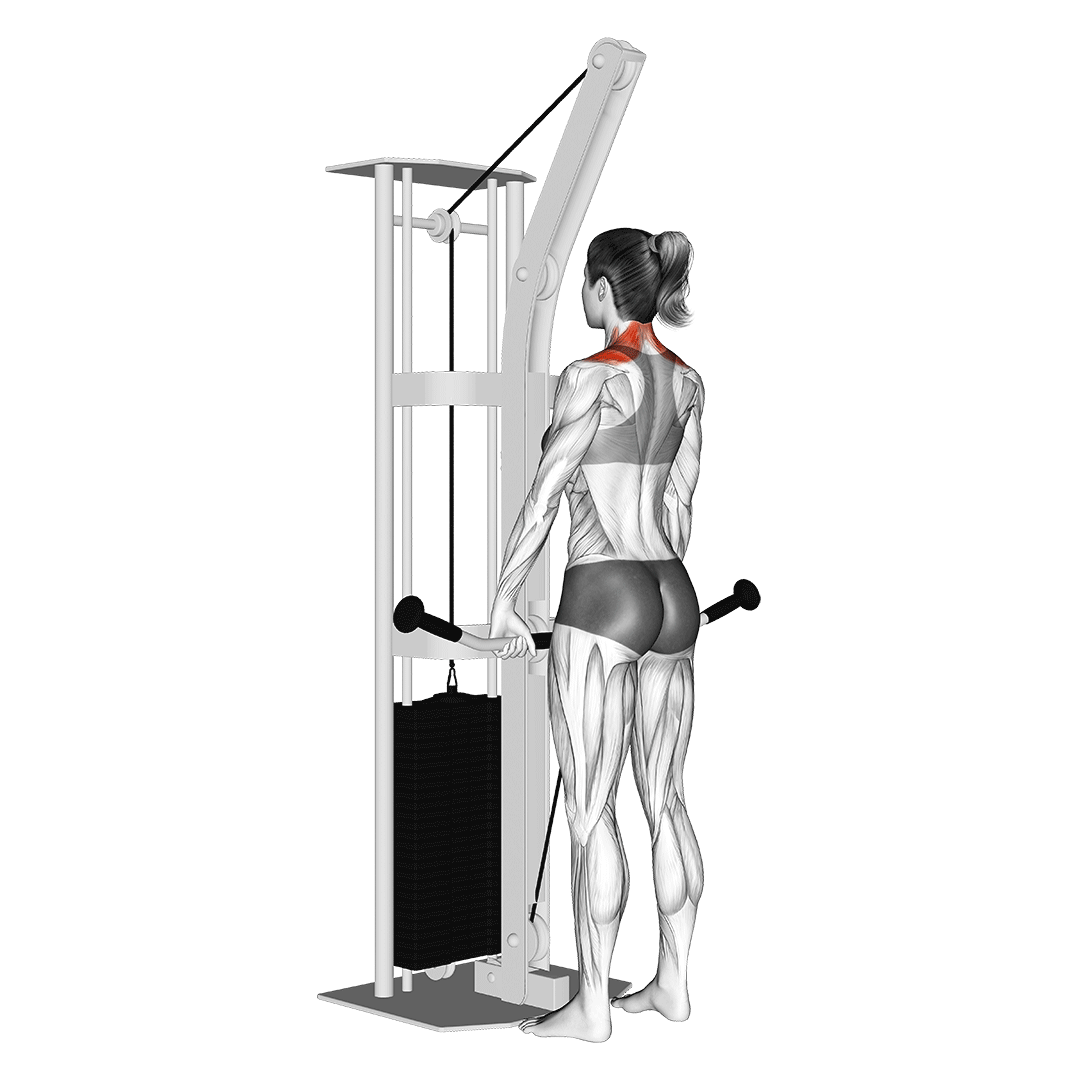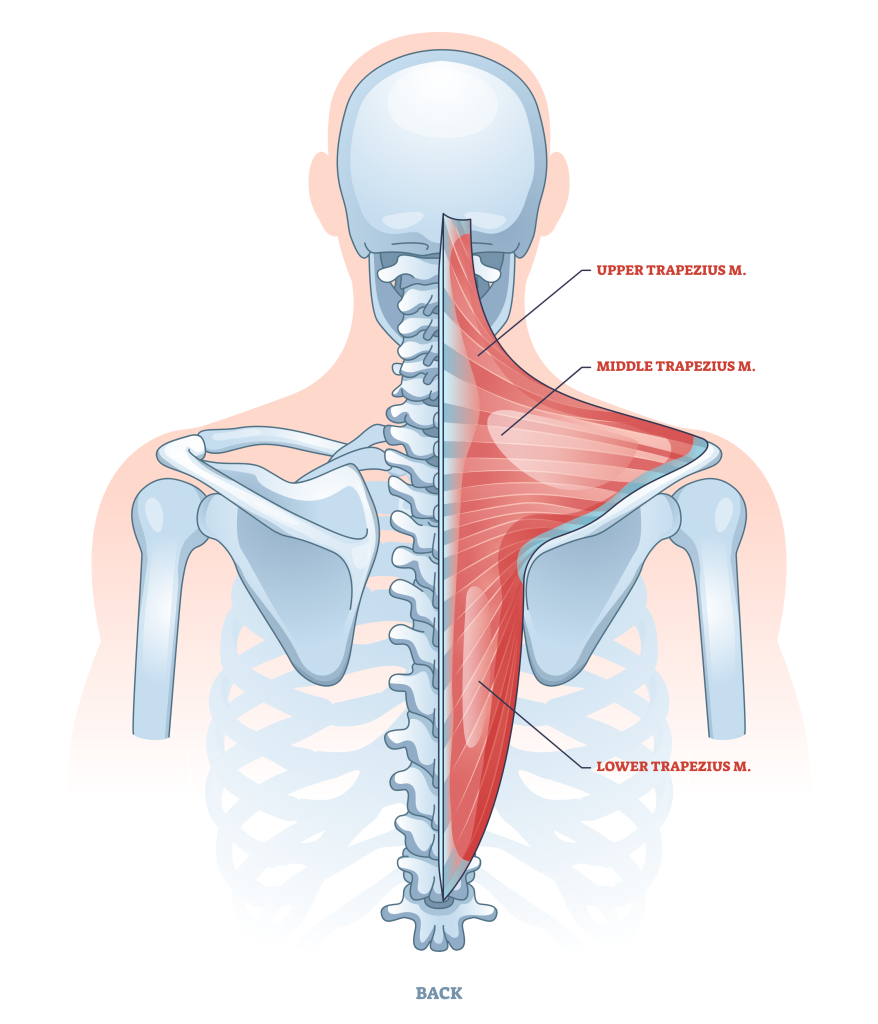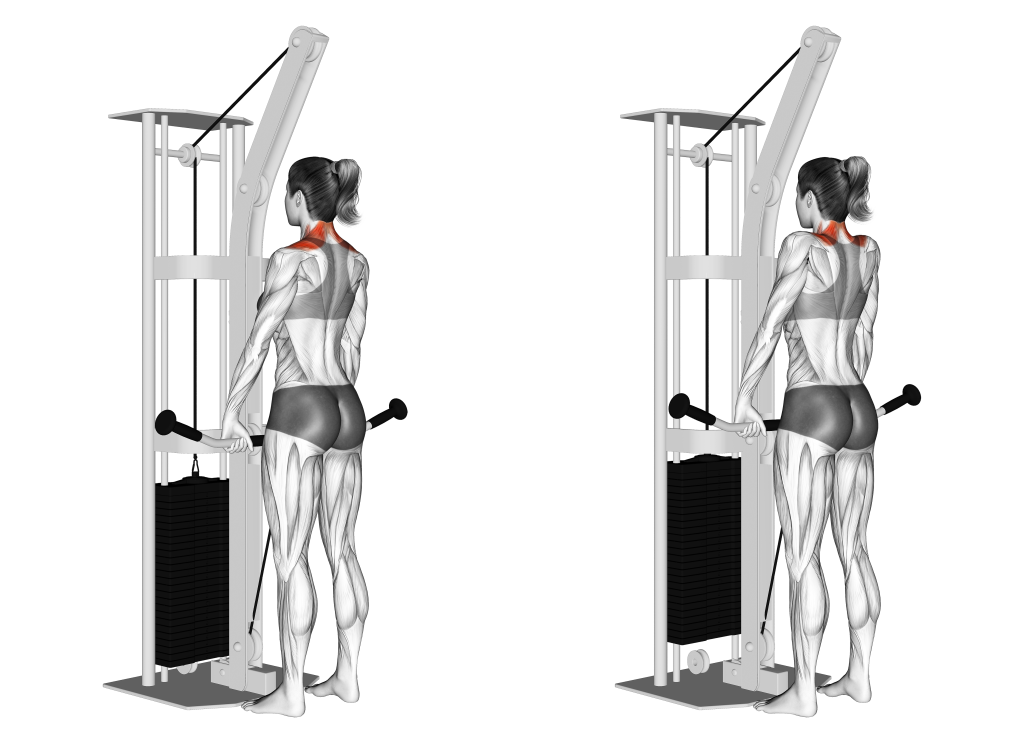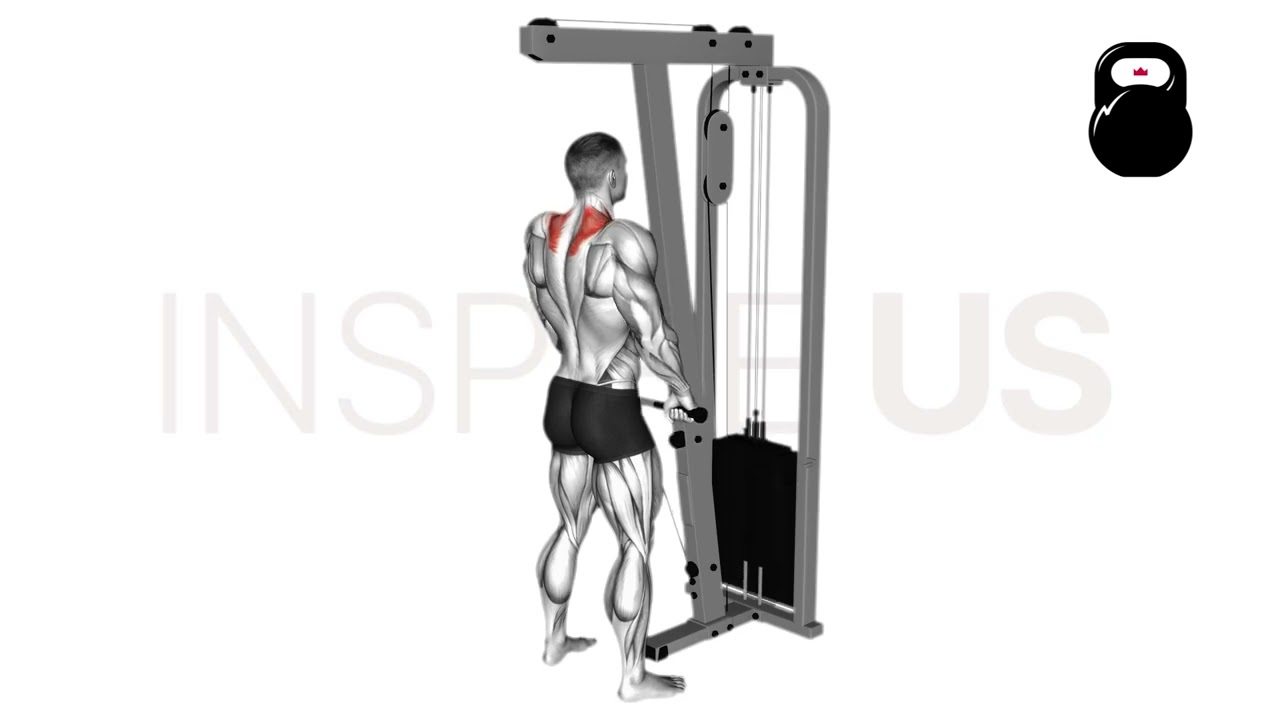Cable Shrugs: Muscles Worked and More
Cable shrugs are a trapezius isolation exercise involving both elevation and retraction of the scapula so as to literally shrug the shoulders up towards the neck.

In actual practice, cable shrugs are programmed as a higher volume accessory movement near the end of a training session, as they are an isolation exercise with a relatively small range of motion.
There are two main methods of doing a cable shrug - one where two cable towers are used and the arms each grip their own handle, and another where only one tower is used and a two-handed handle is employed instead.
These two variants of cable shrug are much the same and achieve practically the same training stimulus. Whichever one you should do is largely down to personal preference.
How to Do Cable Shrugs
To perform a repetition of the cable shrug, the lifter will begin by first adjusting the cable pulley to its lowest position, attaching either a straight bar for the single pulley variant or a pair of D handles for the two pulley variation.
Standing either facing the single pulley or between the two towers (for the two pulley variant), the lifter pushes their chest out, braces their core and faces their head forwards.
No forward rounding of the upper back or shoulders should be present - the shoulders should remain neutral throughout the entire set.
Now positioned correctly, the lifter contracts their trapezius and shrugs their shoulders up words their ears, keeping their elbows relatively straight so as to prevent contraction of the arm muscles.
Once the shoulders are raised as high as mobility allows, the lifter then slowly releases tension in their traps and allows the resistance of the cable to slowly pull their scapula back downwards. At this point, the repetition is complete.
Sets and Reps Recommendation:
With their short range of motion and isolated recruitment of the traps, cable shrugs are best used for a significant amount of resistance and a moderate amount of volume.
2-4 sets of 8-12 repetitions at a relatively heavy amount of weight is ideal for growing the traps.
What Muscles do Cable Shrugs Work?
As an isolation exercise, cable shrugs only truly work the trapezius themselves to any meaningful capacity.
To be more specific, it is the upper portion of the trapezius that juts out over the shoulders that is worked to the greatest extent - owing to the significant scapular elevation required to perform the exercise.

The middle and lower sections of the muscle group are recruited to a somewhat lesser degree, as their individual actions are retraction of the scapula and depression of the scapula respectively.
Other muscles used as stabilizers - those being the deltoids and forearms - are not contracted sufficiently to induce any sort of actual development.
Common Cable Shrug Mistakes to Avoid
Although the cable shrug is quite literally just a shrugging motion, there are still a few errors to watch out for in terms of technique and stance. Eliminate these mistakes in order to maximize the development of your trapezius muscles.
Extending Neck Forwards
Lifters attempting to move too much weight may find themselves unconsciously sticking their chin out or otherwise extending at the neck to try and maximize how high they can lift their shoulders. This is a mistake that affects both injury risk and the actual effectiveness of the cable shrug itself.

Extending the neck forwards can reduce the involvement of the trapezius and otherwise place the cervical section of the spine at risk.
An ideally performed cable shrug will have the head over the neck along a vertical line, allowing the trapezius to contract to the best of their ability.
Pulling With the Arms
It is important to remember that the cable shrug is meant to be a trapezius isolation exercise.
Feeling muscular contraction in the biceps, forearms or chest may indicate that the handle is being pulled through the arms, negating the benefits of the exercise and potentially reducing the involvement of the trapezius themselves.
The arms should remain straight throughout the entire set, with the elbows locked out and the shoulders rotated neutrally. Bending of the elbows is a clear sign that the biceps brachii and other elbow flexor muscles are being contracted - often as a result of too much weight being lifted.
Insufficient Range of Motion
Though the actual range of motion of the cable shrug is quite small, it is nonetheless still important to work the trapezius through their full range.
Each repetition should begin and end with the scapula partially depressed and the shoulders relaxed, whereas the top of the repetition should involve the shoulders being hunched upwards and the scapula elevated as high as possible.
Failing to complete a full range of motion can lead to the trapezius muscles responding poorly to the exercise, and even the development of issues like poor mobility, sticking points and instability of the entire upper trunk.
Explosive Tempo
Although there is some clinical evidence to indicate that shrugs benefit most from rapid and explosive contraction, the cable shrug is not an exercise meant to be performed in this way.
Rapidly jerking the handle (and shoulders) upwards can lead to injury, and otherwise be detrimental to the effectiveness of the movement as a traps builder.
Aim to perform each repetition in a slow and controlled manner, taking care to stretch out the entire movement so as to maximize how long the trapezius muscles are sustaining tension.
Horizontal Angle of Resistance
While it is indeed true that the adjustability of the cable machine is a principle advantage of doing cable shrugs, properly targeting the upper trapezius will require a vertical angle of resistance.
Adjusting the cable pulley so that it angles the cable horizontal to the trunk will essentially turn the movement into a row or a face pull. This contracts more muscles than the trapezius, defeating the purpose of the exercise and potentially straining the shoulder joints as well.
Unless performing a specific variation of cable shrug, it is best to place the pulleys as low as possible.
Bending the Torso
To avoid straining the back or otherwise taking emphasis away from the trapezius muscles, the trunk should be entirely vertical throughout the set.
No forward rounding of the shoulders or upper back should be present, and the core must be lightly braced so as to ensure that the torso does not bend forwards at the waist.
Lifters having difficulty maintaining an upright torso while performing cable shrugs can try standing closer to the pulley, creating an even more vertical angle of resistance.
Cable Shrug Alternative Exercises
If the cable shrug doesn’t quite hit your traps the right way, try the following alternative exercises out - all of which share the same sort of training stimulus and emphasis on the trapezius muscles.
Cable High Rows
Cable high rows are a compound machine-based exercise involving significantly more contraction of the biceps brachii, posterior deltoids and latissimus dorsi than cable shrugs would.
Apart from requiring the trapezius to elevate the scapula, cable high rows will also involve significant elbow flexion and a greater degree of scapular retraction than would be used with cable shrugs.
Essentially, the cable high row can act as a cable shrug alternative if no actual compound back movement is present within the session programming.
Although it will feature far less emphasis on the trapezius muscles, the cable high row will nonetheless still train much of the upper back with much the same equipment.
Face Pulls
Face pulls are a similarly machine-based trapezius exercise involving the cable pulley being positioned horizontal to the face - requiring the lifter to pull the handle towards their face through scapular retraction and elbow flexion.
Alongside the trapezius muscles, face pulls will also recruit the posterior deltoid head and the smaller muscles of the mid-back.
Because of its larger range of motion and somewhat more advantageous stance, the face pull can act as a direct substitute to shrugs so long as overall posterior deltoid and rotator cuff training volume allows for it.
Smith Machine Shrugs
If no cable machine is presently available, it is entirely possible to substitute cable shrugs with smith machine shrugs.
The two variations of shrug isolate the trapezius muscles in exactly the same way, only with the smith machine featuring a somewhat more strict movement pattern as the bar is locked into a vertical path.
Outside of acting as a direct equipment substitute, the smith machine shrug is identical to the cable shrug and may be performed interchangeably.
Frequently Asked Questions (FAQ)
What do Shrugs Help With?
Shrugs strengthen the trapezius muscles of the upper and middle back, leading to improved scapular stability, better upper body posture and stronger pulling strength as a whole.
Are Cable Shrugs a Waste of Time?
Not at all - cable shrugs are great for building muscular and powerful trapezius muscles.
Like any other muscle group, the traps benefit greatly from targeted isolation, such as is provided by cable shrugs and other variations of the shrug exercise.
Do Cable Shrugs Improve Grip?
Although the forearms are involved in cable shrugs as they are used to grip the handle, this role is not significant enough to result in any sort of noticeable development whatsoever - especially in terms of grip strength.
If you wish to truly develop your grip strength and forearm power, try dumbbell wrist curls, dead hangs and plate pinches.
References
1. Javorek, Istvan. EXERCISE TECHNIQUES: Shrugs. National Strength and Conditioning Association Journal 9(6):p 28-33, December 1987.
2. Johnson, G et al. “Anatomy and actions of the trapezius muscle.” Clinical biomechanics (Bristol, Avon) vol. 9,1 (1994): 44-50. doi:10.1016/0268-0033(94)90057-4

